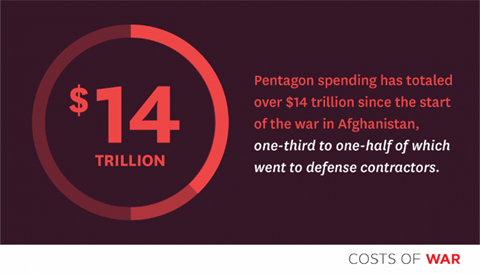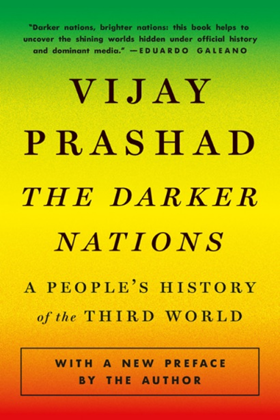Harry Targ
An
Empire in Relative Decline
United
States global hegemony continues to be challenged. As the beneficiary of
war-driven industrial growth and the development of a military-industrial
complex unparalleled in world history, the United States was in a position in
1945 to construct a post-war international political and economic order based
on huge banks and corporations. The United States created the international
financial and trading system, imposed the dollar as the global currency, built
military alliances to challenge the Socialist Bloc, and used its massive
military might and capacity for economic penetration to infiltrate, subvert,
and dominate most of the economic and political regimes across the globe.
The United
States always faced resistance and was by virtue of its economic system and
ideology drawn into perpetual wars, leading to trillions of dollars in military
spending, the loss of hundreds of thousands of American lives, and the deaths
of literally millions of people, mostly people of color, to maintain its
empire.
As was the
case of prior empires, the United States empire is weakening. There is now the
possibility of a multipolar world emerging with challenges to traditional
hegemony coming from China, India, Russia, and the larger less developed
countries such as Brazil, Argentina, South Africa, South Korea, and Thailand.
By the 1970s, even traditional allies in Europe and Japan had become economic
competitors of the United States.
The United
States throughout this period of change has remained the overwhelming military
power, however, spending more on defense than the next seven countries
combined. It remains the world’s economic giant even though growth in domestic
product between 1980 and 2000 has been a third of its GDP growth from 1960 to
1980. Confronted with economic stagnation and declining profit rates the United
States economy began in the 1970s to transition from a vibrant industrial base
to financial speculation and the globalization of production.
The latest
phase of capitalism, the era of neoliberal globalization, required massive
shifts of surplus value from workers to bankers and the top 200 hundred corporations
which by the 1980s controlled about one-third of all production. The
instruments of consciousness, a handful of media conglomerates, have
consolidated their control of most of what people read, see, hear, and learn
about the world.
A policy centerpiece
of the new era, roughly spanning the rise to power of Ronald Reagan to today,
including the eight years of the Obama Administration, has been a massive shift
of wealth from the many to the few. A series of graphs published by the
Economic Policy Institute in December, 2016 showed that productivity, profits,
and economic concentration had risen while real wages have declined, inequality
increased, gaps between the earnings of people of color and women and white men
grew, and persistent poverty remained for twenty percent of the US population
(https://www.epi.org/publication/inequality-2021-ssa-data/ for 2021 data on economic
inequality). The austerity policies, the centerpiece of neoliberalism, spread
all across the globe. That is what globalization has been about.
Contrary to
the shifts toward a transnational capitalist system and the concentration of
wealth and power on a global level, the decline of U.S power, relative to other
nation-states in the twenty-first century, has increased. China’s
economy and scientific/technological base have expanded dramatically. The wars
in Afghanistan, Iraq, and the spreading violence throughout the Middle East
have overwhelmed US efforts to control events. Russia, Iran, China, and even
weaker nations in the United Nations Security Council have begun to challenge
US power and authority. Mass movements increasingly mobilize against regimes
supported by the United States virtually everywhere (including mass
mobilizations within the U.S. as well).
However,
most U.S. politicians still articulate the mantra of “the United States as the indispensable
nation.” The articulation of American Exceptionalism represents an effort to
maintain a global hegemony that no longer exists and a
rationale to justify the massive military-industrial complex which fuels much
of the United States economy.
(For more data on military bases see https://www.davidvine.net/bases.html)
Imperial
Decline and Domestic Politics
The
narrative above is of necessity brief and oversimplified but provides a
backdrop for reflecting on the substantial shifts in American politics. The
argument here is that foreign policy and international political economy are
“the elephants in the room” as we reflect on the outcomes of recent elections.
It does not replace other explanations or “causes” of election results but
supplements them.
First, the
pursuit of austerity policies, particularly in other countries (the cornerstone
of neoliberal globalization) has been a central feature of international
economics since the late 1970s. From the establishment of the debt system in
the Global South, to “shock therapy” in countries as varied as Bolivia and the
former Socialist Bloc, to European bank demands on Greece, Spain, Portugal, and
Ireland, to Reaganomics and the promotion of Clinton’s “market democracies,”
and the Obama era Trans-Pacific Partnership, the wealth of the world has been
shifting from the poor and working classes to the rich.
Second, to
promote neoliberal globalization, the United States has constructed by far the
world’s largest war machine. With growing opposition to U.S. militarism around
the world, policy has shifted in recent years from “boots on the ground,”
(although there still are many), to special ops, private contractors, drones,
cyberwar, spying, and “quiet coups,” such as in Brazil and Venezuela, to
achieve neoliberal advances.
One group of foreign policy insiders, the humanitarian interventionists, has lobbied for varied forms of intervention to promote “human rights, democratization, and markets.” 2016 candidate Hillary Clinton and a host of “deep state” insiders advocated for support of the military coup in Honduras, a NATO coalition effort to topple the regime in Libya, the expansion of troops in Afghanistan, even stronger support of Israel, funding and training anti-government rebels in Syria and the overthrow of the elected government of Ukraine. Secretary of State, Hillary Clinton was a major advocate for humanitarian interventionist policies in the Obama administration.
Humanitarian
interventionists have joined forces with “neoconservatives” in the new century
to advocate policies that, they believe, would reverse the declining relative
power of the United States. This coalition of foreign policy influentials has
promoted a New Cold War against China and Russia and an Asian pivot to
challenge an emerging multipolar world. The growing turmoil in the Middle East
and the new rising powers in Eurasia also provide rationale for qualitative
increases in military spending, enormous increases in research and development
of new military technologies, and the reintroduction of ideologies that were
current during the last century about mortal enemies and the inevitability of
war.
In sum, the
“elephant in the room” for the peace movement pertaining to US politics must include building opposition to an activist United States economic/political/military
role in the world and the long history of United States imperialism.
Finally, it must be articulated that to
the extent that economics affects domestic politics the neoliberal global
agenda that has been enshrined in United States international economic policy
since the 1970s, coupled with humanitarian interventionism, has had much to do
with rising austerity, growing disparities of wealth and power, wage and income
stagnation, and declining social safety nets at home. As millions of Americans
struggle to survive poverty, inadequate access to healthcare, homelessness, a
variety of environmental disasters it is time to reinsert visions of a
non-interventionist, anti-militaristic foreign policy into our progressive
political agenda.
How Should the Peace Movement Respond to
the Elephant in the Room?
Somehow this madness must cease. We must
stop now. I speak for those whose land is being laid waste, whose homes are
being destroyed, whose culture is being subverted. I speak for the poor of
America who are paying the double price of smashed hopes at home and death and
corruption in Vietnam. I speak as a citizen of the world, for the world as it
stands aghast at the path we have taken.
-- Dr. Martin Luther King, Jr., April 4, 1967
This year, the Science and Security Board
of the Bulletin of the Atomic Scientists moves the hands of the Doomsday Clock
forward, largely (though not exclusively) because of the mounting dangers of
the war in Ukraine. The Clock now stands at 90 seconds to midnight—the closest
to global catastrophe it has ever been.
--2023 Doomsday Clock Announcement,
January 24, 2023
The Peace Movement has been engaged in a variety of separate but interconnected tasks. It may be useful to identify them, see how they are interrelated, and think about ways in which it and other social justice campaigns can more effectively work together in the coming period.
Peace Movement tasks should include the following:
1.Oppose war. In 2022 the war in Ukraine has captured the attention of activists everywhere. Attention also has been paid on other wars, such as in Yemen and Palestine. Peace researchers have often referred to the historic need to end “direct violence”; that is killing. That task remains preeminent.
2.Reconceptualize “war” as a problem not only
of killing and dying in war but also as a problem of hunger, inequality,
environmental spoilation, and powerlessness in a world of power, control, and
oppression. Peace researchers have called this “structural violence.”
Theorists/activists like Vijay Prashad have argued that the problem of “war,”
both direct and structural is more about the divide in resources and power
between the countries of the Global North (the traditional imperial powers in
Europe and North America) and the vast majority of humankind living in Asia,
Africa, the Middle East and Latin America. For Prashad, the war problem is
about hundreds of years of exploitation, occupation, military assault, sanctions, and the
threat and destruction of the resources and environment of the Global South.
From this point of view, the peace movement task is to engage in solidarity with those
struggling for their liberation from domination and control.
3.Oppose militarism.
Historically peace movements have identified an inextricable connection between
growing militarism and war and further a connection between military spending
and concentrated wealth in selected military corporations. From this point of
view as the old slogan suggests: “war is a racket.” And that "racket” can be
seen as directly reallocating societal resources from fulfilling human needs to
the construction of more and more weapons. Some theorists referred to the
history of United States foreign policy, at least since World War II, as one of
creating a “permanent war economy.”
4.Oppose the use of war to achieve pernicious goals domestically. This perspective sees war preparation as tied to efforts to create solidarity at home, to the detriment of domestic social groups seeking significant social change. For example, as World War II ended, the labor movement sought significant policy changes to improve the rights and conditions of American workers. During the late 1940s, workers were demanding more rights to form unions, national health care, pension systems, and in some unions and communities an end to racism. The emergence of “the Soviet threat” served to stimulate nationalism, a rekindling of the vision of American exceptionalism, and increased repression against those pursuing worker rights and racial justice. In short, the war system, has served to reallocate societal resources and create a virulent nationalism which supports the interests of the wealthy and powerful. The war system, in this sense, is a status quo system. And to justify the war system an increasingly concentrated media institutionalizes narratives justifying war and imperialism.
5.Educate, agitate, and organize around these
four major tasks. The questions that peace movements need to address include:
a.How to theorize about the interconnections between
these four points? How do we develop a compelling narrative that targeted
audiences find compelling for them? Young people, people of color, men,
women, gays and lesbians?
b.How to network with other peace and social justice
organizations?
c.And for now what kind of programs-education, street
heat, networking, organizing- should the peace movement engage in to address the
four key elements raised above.











